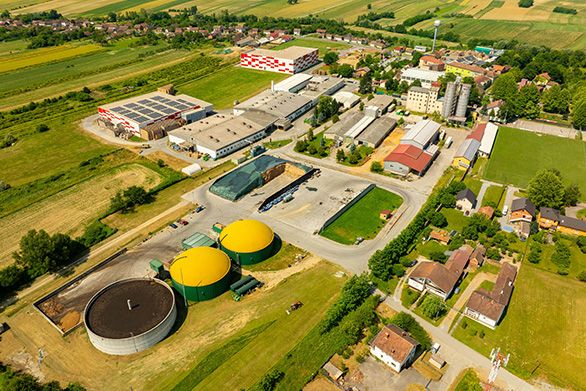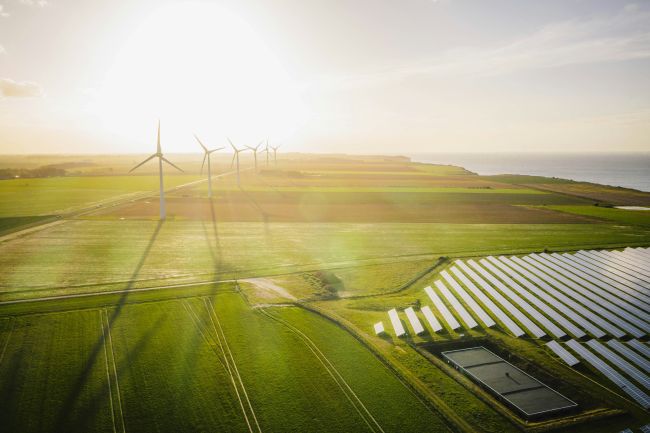From feasibility to finance: commercialising heat networks for place-based growth
Discover how heat networks can unlock investment-ready, low-carbon infrastructure to support sustainable housing growth across the UK.

As the UK scales up housing and infrastructure delivery under its net zero commitments, heat networks are likely to emerge as a critical enabler - not only for decarbonising urban energy use, but for supporting the delivery of cost-effective, scalable infrastructure in growth zones.
At Amberside Advisors, a Steer company, we support public and private stakeholders in navigating the full lifecycle of heat network development — including the post-feasibility stage where financial structuring, stakeholder alignment, and investment readiness come to the fore.
Heat networks: strategic infrastructure for net zero places
The government’s home-building drive isn’t just about quantity - it’s about providing homes that are affordable, future-proof, and aligned with the UK’s Net Zero goals. That means rethinking the infrastructure that supports them.
Heat networks, particularly in high-density or mixed-use developments, offer a cost-effective, low-carbon solution for heating new homes at scale. When planned as part of master developments or regeneration schemes, they can reduce the need for costly individual heating systems, avoid grid reinforcement, and provide long-term energy cost stability for residents.
In this context, heat networks are not simply energy projects - they are enablers of sustainable place-making. Embedding them into new residential developments from the outset supports planning efficiency, ESG alignment, and long-term economic value.
Commercialising the opportunity: from plans to projects
While many local authorities have secured funding for feasibility studies, the true challenge lies in the commercialisation phase - translating technical designs into investable propositions.
This includes:
- Selecting the right delivery model: Whether via Design, Build, Operate, Maintain (DBOM) contracts or full concession type models, aligning risk and control is critical.
- Ensuring revenue and demand certainty: Securing anchor loads - such as large housing developments, hospitals, or universities - helps de-risk long-term income streams.
- Preparing for investment: Investors are increasingly interested in heat networks but require confidence in governance, project scale, and financial robustness.
With the Energy Act 2023 and upcoming zoning regulations, the timing is critical. Projects that are capital-ready could be best placed to take advantage of these shifts and meet the infrastructure demand linked to home-building.
Investor priorities: what makes a project bankable?
Investors are increasingly seeking projects that:
- Align with ESG and net zero objectives
- Deliver long-term, stable revenue (e.g. through new developments or anchor public sector loads)
- Use standardised governance and procurement processes
- Are scalable, replicable, and transparently structured
We work with local authorities to position heat network schemes within place-based infrastructure portfolios, bundling opportunities across estates, regeneration zones to create attractive investment scale.
A whole-system, place-based approach
Heat networks deliver more than heat – they can reduce electricity grid demand, support renewables integration, and offer lower lifecycle emissions than individual property solutions. For new housing block developments, especially in dense urban environments, they represent a pragmatic and future-ready option.
From a whole-system perspective, aligning housing construction drive with district heat infrastructure allows the UK to lower transition costs, boost investor confidence, and ensure new communities are built to last.
Final thoughts
As the UK works to align housing growth with climate action, heat networks offer a powerful tool to bridge infrastructure and investment. Moving from feasibility to commercialisation is where this potential becomes reality.
Through our work at Amberside Advisors, we partner with local authorities and investors to structure, finance, and deliver the next generation of heat network projects — integrated into the homes and communities of the future.
Join us at UKREiiF
Are you interested in this topic? We would love to continue the conversation about alignment of heat network projects with the wider infrastructure investment at UKREiiF, where our team will be available for 1:1 meetings.
Or you can join us online for our official UKREiiF fringe event: Connected economies – unlocking growth through integrated transport, housing & infrastructure; on Wednesday 21 May between 8.30-9.15am. It’s the last opportunity to register!













